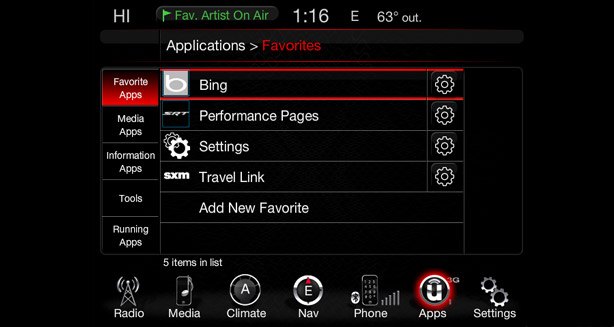#gizmology
Macchina Brings Car Hacking To The Masses
Tuners and researchers have searched for ways to pull data from cars and modify it ever since the introduction of the first on-board computer in the late 1960s. The advent of fuel injection and computer-controlled engines in the 1990s brought computerized tuning front and center. And while the OBD2 standard — made mandatory in 1996 —standardized the interface and made it easier to read diagnostics and log some parameters, modification and advanced logging was still complicated and expensive.
Professional tools and open source hardware popped up in the past decade to allow deeper access into a car’s electronics, but most ready-made products were still expensive. Open source variants also required knowledge of soldering and programming. Now, Macchina has taken the best of both worlds and packaged it into an inexpensive product that should prove useful for researchers as well as tuners.
'Mystery Device' Unlocks and Starts Over 50 Percent of Tested Vehicles
Over the past two years, we’ve brought you in-depth coverage of a crop of shadowy gadgets designed to give thieves access to parked vehicles.
Like most tools of the trade, the gadgets are very similar, using the same principle to achieve the same result — unlocking a parked vehicle by sending signals to the car’s own keyless-entry system. For vehicles with a push-button ignition, the same gadgets can sometimes start the vehicle, giving that thief an instant lifestyle upgrade.
Now, a “mystery device” purchased by the National Insurance Crime Bureau (NICB) has revealed just how vulnerable an average vehicle is to these high-tech slim jims.
Mysterious Lynk & Co Brand Teases a Real Car Ahead of Debut
When word of Lynk & Co first trickled out, the yet-to-be-revealed global car brand sounded exactly like a garden variety mobility company. Oh, there’ll be ride-sharing and apps and all that, we thought.
Then the brand revealed that an actual real, physical vehicle is on the way. Developed from Volvo’s Compact Modular Architecture (CMA) platform, the model will debut on October 20. And while we have some teaser images, the company — a subsidiary of Chinese Volvo parent company Geely — remains maddeningly vague about what its future.
'Polished Turd': Docs Show What Ford Engineers and Execs Really Thought About MyFord Touch, Sync
Customers welcomed Ford’s Sync3 infotainment system with all the enthusiasm of a child running across the tarmac to greet a returning serviceman, and with good reason.
The automaker’s MyFord Touch and Sync systems, launched at the beginning of the decade, caused irritated customers to pull out their hair and join together in a 2013 class-action lawsuit. Court documents obtained by The Detroit News now show that the frustration at Ford went all the way to the top.
Yes, Your Autopilot-Equipped Tesla Will Film a Crash
It’s common knowledge that Tesla vehicles store and transmit data back to the company’s Fremont, California home base, but a hacker working on a wrecked Model S just discovered something startling.
In an interview published by Inverse (h/t to Hybrid Cars), North Carolina computer programmer Jason Hughes claims that Tesla’s Autopilot system actually records video. While working on a center display unit from a wrecked Model S, Hughes found footage of the vehicle’s crash.
Now a Self-Driving Technology and Mobility Player, Ford Seeks an Edge
Taking to a Dearborn stage on Monday, Ford Motor Company CEO Mark Fields declared, “We are expanding our business to be both an auto and mobility company.” With this statement, Fields has created additional competition. No longer will Ford only be battling traditional auto manufacturers.
Now, the automaker’s competitors include Uber, Lyft, Google, and Apple — each one focused on current and future mobility solutions. How does the company plan to win?
Elon Musk's Future Vision: Your Tesla Gets a Day Job, and Why That Might Not Be a Good Idea
In his Master Plan, Part Deux, some of Tesla CEO Elon Musk’s visions make a lot of sense, like a compact SUV based on the Model 3 platform, and a pickup truck, which will presumably have more than enough torque to haul around a big load (and plenty of space for a big battery pack).
That’s not at all what I want to talk about. Instead, I want to talk about some of the more speculative parts of the Musk vision: the self-driving vision. ( I first wrote about some of the dystopian aspects of self-driving cars for TTAC in 2010.)
Musk wants you, the owner of a Tesla, to click a button and have your self-driving car go off and Uber itself during the day while you’re at work, earning you money. It will come back to you at the end of the day, ready for you to use again. This vision is going to have a very harsh collision with reality.
Fiat Chrysler Will Give You Cash to Find Cyber Threats
In a few weeks, after Pokémon Go jumps the shark and we all head back to our homes for nights of solitude, Fiat Chrysler Automobiles will offer another opportunity for high-tech geekery. And a lucrative one, too.
Announced today, the automaker will hand tech-savvy individuals cold, hard cash in return for information on weaknesses in its vehicles’ cybersecurity. Exposing a hidden backdoor that hackers could sneak through will net you up to $1,500.
Tesla Picks an Awkward Time to Announce Updates to Its Autopilot System
Less than a week after it was revealed that Tesla’s semi-autonomous driving mode played a role in a deadly May crash, the automaker is planning a host of changes to its Autopilot system.
The changes, billed as the 8.0 upgrade, include a feature that allows the vehicle to exit a highway and navigate an off-ramp while in Autopilot mode, according to Autoguide. The function will be activated by the vehicle’s turn signal.
Hyperloop Makes Successful Open-Air Test, Breaks the Speed of Yawn
No one wants their most exciting moment to last two seconds, so let’s hope the folks at Hyperloop One have bigger things coming down the, erm, pipe.
Yesterday, amid great fanfare and hype, the recently renamed Hyperloop One (formerly Hyperloop Technologies) performed the first open-air test of the electromagnetic propulsion system at the heart of the futuristic transportation concept.
As a bandstand of employees and media watched beneath the hot Nevada sun, a test vehicle rocketed along a track for two seconds, hitting Camry-on-a-joyride speeds — officially, 116 miles per hour — before plowing into a sand trap. The future doesn’t have brakes yet, just sand.
Start-Stop System: Now Available On YOUR Smartphone – Or is It a Stop-start System?
Some forty years in the making, start-stop technology has arrived on your smartphone. Volkswagen launched an app that stops YouTube videos automatically when you look away from the screen. And it starts again, when you look back. The app uses facial recognition technology to capture when the viewer is looking away, only to resume when eyeballs are back on screen. PWHS (People With Heightened Sensitivities) will not like it: Averting your eyes during a shocking scene on YouTube won’t help anymore. The price of progress, I guess.
But what are the origins of this startling technology?
Ford To Improve Digital Dealer Experience With A Lot Of Money
In the world of dealer standards, it is usually the OEMs that write the standards, and it is the dealers who have to pay the usually steep bills. Occasionally, an OEM even is tempted to recoup the steep cost of developing a new corporate identity by marking up the signage sold to its dealers. Dealers hate it. Ford is doing something dealers will love: Ford will offer dollar-for-dollar matching funds to its 3,100 U.S. dealers to upgrade their shops, from new construction to improved digital programs, Ford executives told Reuters.
Sprint To Automakers: Give Us Your Tired, Your Poor, Your Wretched In-Dash Gizmos
Sprint Nextel presents a new “Velocity” in-vehicle communications and entertainment architecture at the LA auto show. You can’t buy it from Sprint, but Sprint hopes your automaker will buy it from them. This did not keep Sprint from taking jabs at its presumptive customers:
Ford: Wait, We Fixed MyFordTouch!
MyFordTouch was supposed to build on the SYNC system’s momentum, extending Ford’s edge in mass-market infotainment gizmology. Instead, MyFord nearly killed the golden egg-laying goose, by earning Ford a sharp downgrade from Consumer Reports and widespread criticism. Ford has decided that 40-minute training sessions weren’t going to cut it as a response to the complaints that the system was balky and confusing, and The Blue Oval is now trumpeting the all-new for 2013 version of MyFordTouch. Because, in the words of Ford’s spokes-interior-designer-person
As you can see, with a software platform like SYNC, it’s easy to continuously improve and upgrade your system.
You know, in comparison to the all-new Ford Escape she’s sitting in. It’s still not quite as easy as a computer software update: instead of downloading the reflash, you have to go into a dealer to get the upgrade. Meanwhile, this is just the latest hurdle in the hot-hot in-car gizmo side of the business. The big one comes in 2014, when the government issue rules on distraction-mitigation in voice-activated in-car systems. That could make this minor public beta testing fiasco look like nothing…
Paper Treated Differently Than Smartphones in Automobile Searches
Motorists searched during a traffic stop may find their iPhone data electronically grabbed by police in ways that would not be possible or acceptable with written material. Some police departments, including the Michigan State Police, are equipped with a mobile forensics device able to extract images, videos, text messages and emails from smartphones. In some cases, the device is able to bypass password protection. Several states have been reluctant to curtail law enforcement access to this information.




























Recent Comments